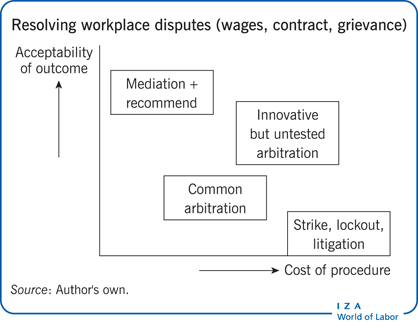Elevator pitch
Alternative dispute resolution procedures such as arbitration and mediation are the most common methods for resolving wage, contract, and grievance disputes, but they lead to varying levels of success and acceptability of the outcome depending on their design. Some innovative procedures, not yet implemented in the real world, are predicted to improve on existing procedures in some ways. But controlled tests of several procedures show that the simple addition of a nonbinding stage prior to binding dispute resolution can produce the best results in terms of cost (monetary and “uncertainty” costs) and acceptability.

Key findings
Pros
Binding dispute resolution guarantees a settlement.
A well-designed procedure can promote voluntary settlements.
A nonbinding stage to a dispute resolution procedure can help limit disputes caused by incomplete information.
Any procedure promoting voluntary settlement is likely to be beneficial in the long term.
Cons
Common dispute resolution procedures increase dispute rates relative to such alternatives as strikes and lockouts.
Poorly designed dispute resolution procedures may limit good faith bargaining.
Settlements from a third party may be extreme and less acceptable than voluntary settlements.
Dispute resolution procedures may be addictive, as reliance on them can increase over time.